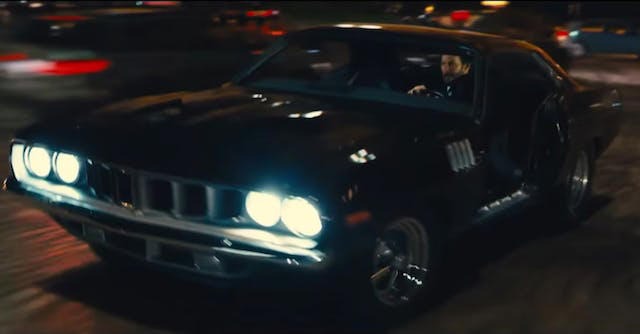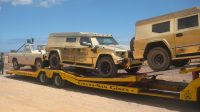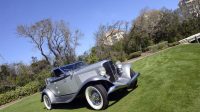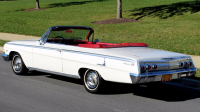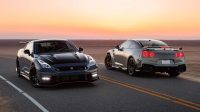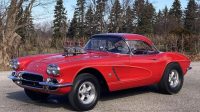
John Wick is a rarity in the modern movie landscape. Though it is a successful Hollywood franchise, there was no prior source media for the 2014 film that kicked off this action-film craze. The tale follows Keanu Reeves’ titular character, a legendary retired hitman who, while mourning the loss of his wife to cancer, suffers considerable indignity: The ignorant son of a Russian gangster kills his Beagle puppy, a gift from his late love. Adding insult to injury, the perpetrator also steals his car.
This premise isn’t the point, of course. In many ways this is a variation on the classic revenge flick trope, in which the protagonist sets out on a bloody path of vengeance. The movie won fans with its mix of beautifully choreography, over-the-top sequences, and Reeves’ dedication to tactical detail and gruff demeanor. He’s called “Baba Yaga,” the Russian folk version of the Boogeyman, for a reason. (Though Wick’s house does not, to our knowledge, grown gigantic chicken legs and walk around.)
At this moment, John Wick: Chapter 4 sits in the second slot of the domestic box office. That has us revisiting some of our favorite moments from the series, particularly Wick’s fondness for hot American metal. Check out John Wick’s impeccable taste in cars:

The main plot of the 2014 original film kicks off with Wick’s chance gas station meeting with Iosef Tarasov, played by actor Alfie Allen. Tarasov, emboldened by his status as the child of a Russian mob boss, takes a shine to Wick’s car—what purports to be a 1969 Mustang Boss 429. (Experts will recognize some errors in the bodywork, a lack of badging, and an automatic transmission, but for the purposes of a suspension-of-disbelief action flick, it checks the box.) Tarasov plays up the tough guy act to intimidate Wick into selling, to no avail.
Instead, the problem child assembles a crew that marches on Wick’s home, kills his dog, and steals his Boss. Little did they know, they poked the wrong bear.

If it were real, Wick’s Boss 429 would represent one of just 857 that were pressed in the first of two years of production to homologate Ford’s 7.0-liter NASCAR motor. These monster ponies represented the high-water mark of non-Shelby ‘Stangs and were, according to many, underrated at 375 hp and 450 lb-ft of torque.

While visiting a performance shop belonging to Wick’s friend, we catch a glimpse of some tasty rides, including a Porsche 993-gen GT2 and a Gulf-livery Ford GT40. There, Wick takes delivery of his replacement ride, a 1970 Chevelle SS 396.
The Chevelle sees minimal screen time in the original film, receiving a stay of execution when Wick opts instead for a modern 5.7-liter Dodge Charger for his final assault on the Russians. But there is something fitting and sinister about that green-painted Chevelle—a custom hue that is too dark to be the factory Forest Green—rumbling through Manhattan that leaves an impression.
As with any car in this franchise, it’s best not to get too attached. The SS 396 becomes the tank that Wick rides to battle to recover his (also ill-fated) Mustang in the stunning opening sequence of Chapter 2.

After destroying some classics, John takes a well-advised break old metal and, for the rest of Chapter 2 he’s mostly seen on foot, riding public transit, and, at the very end, behind the coach door of a Series II Rolls Royce Ghost. While the Ghost is too new for collector value data, it might be the most suitable ride for the Boogeyman—at least one that looks dashing in a suit.

Car-wise, John Wick: Chapter 3—Parabellum is the low point of an otherwise excellent quadrilogy, but it isn’t without its vehicular merits. It also introduces the audience to Halle Berry and her pair of Belgian Malinois attack dogs to make up for its lack of large-bore V-8s.
Around the halfway point, Wick, Berry’s character, and the show-stealing pups escape into the desert aboard a second-generation Range Rover, the film’s only real automotive star. According to the wonderful Internet Movie Car Database, it is a ’95 model. These Brit rigs are treated as collectibles primarily among the top-condition examples (roughly $54,000–$68,000), but the Rangie in the movie looks to be more of a driver-condition beast.

Baba Yaga returns to form in Chapter 4 at the helm of a menacing ’71 Cuda. Unfortunately, John Wick does John Wick things to the poor Plymouth. The critical Cuda scene takes place at night, so it isn’t immediately clear what’s lurking under the hood, but given the amount of criminally-sourced gold coins at his disposal, his track record for good taste, and the magic of prop acting, we’re wagering it’s the pricey 440 Six Pack or Hemi.


